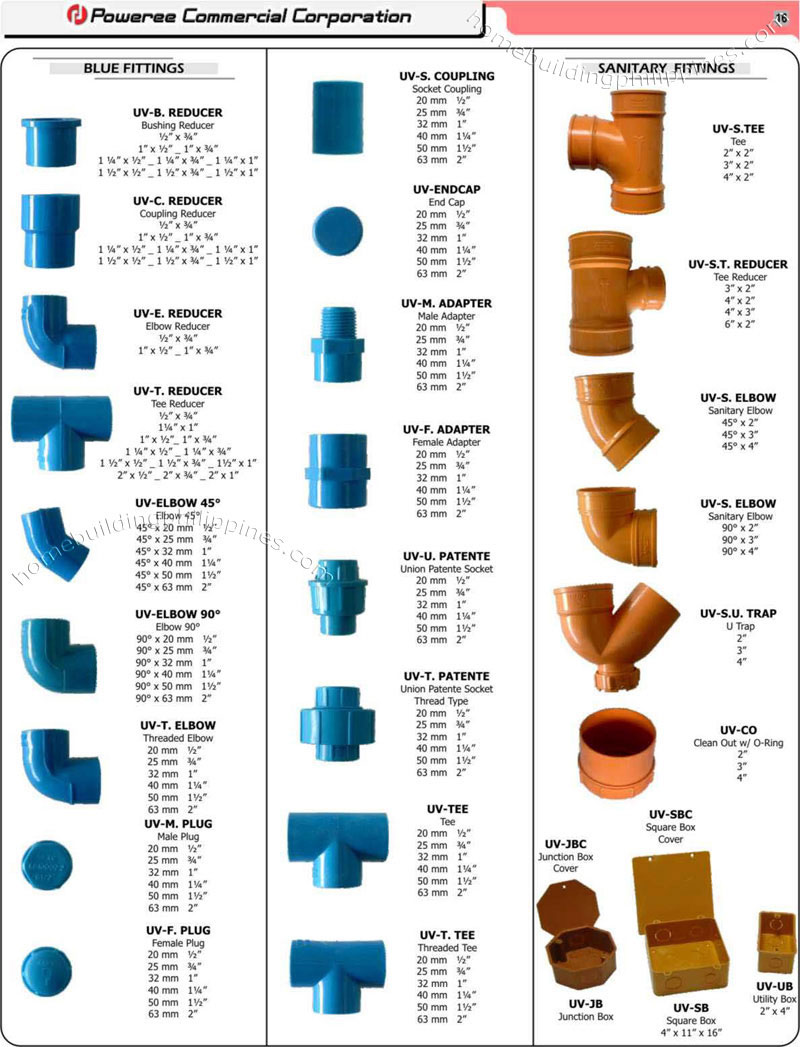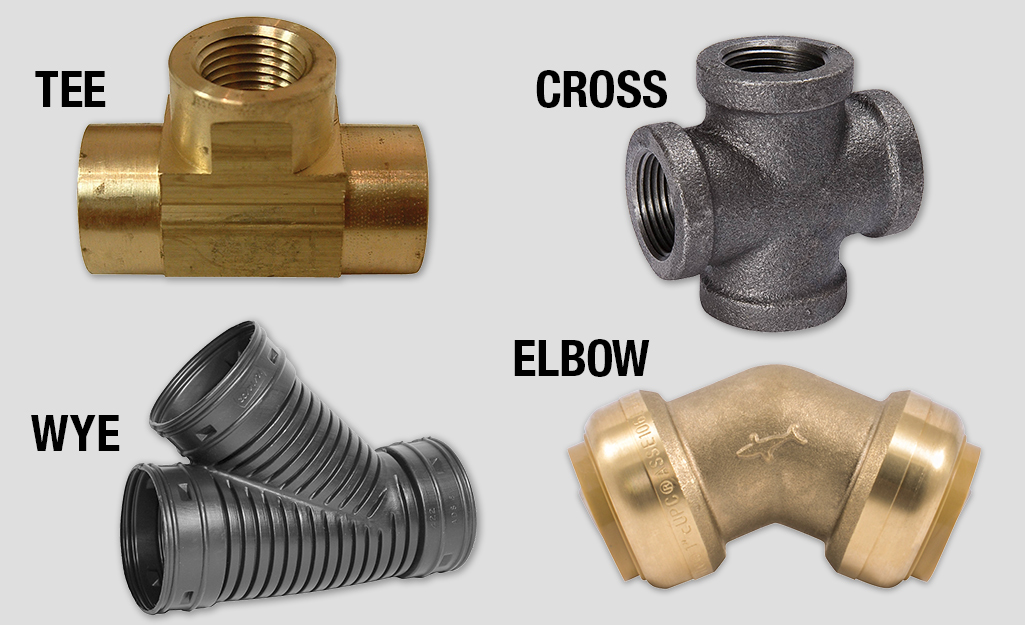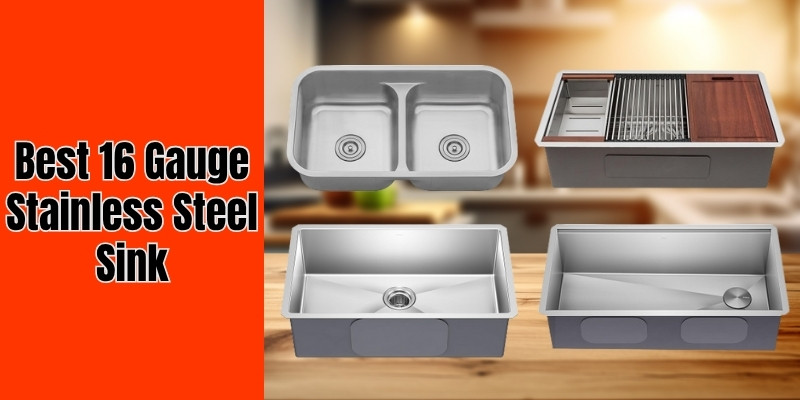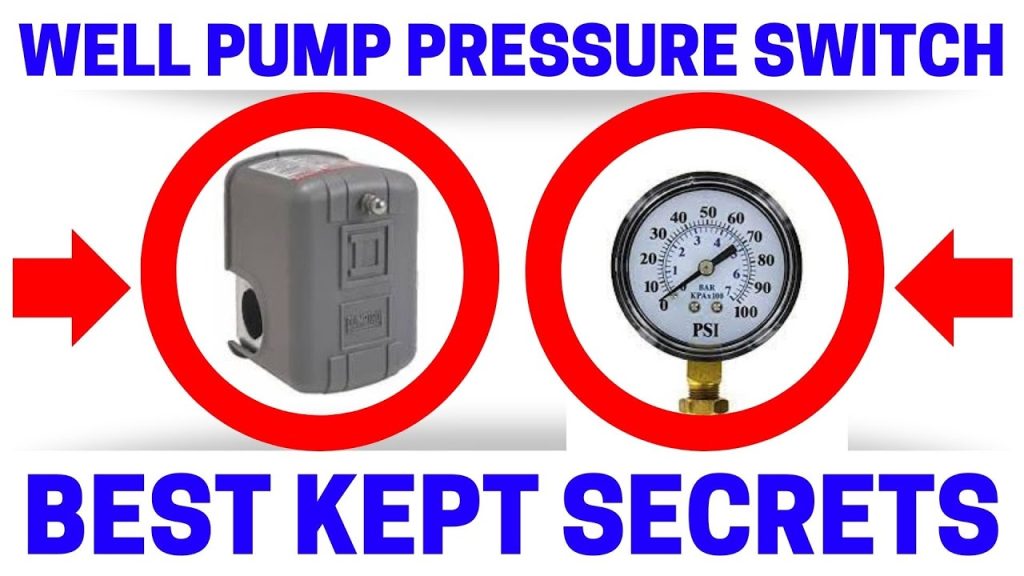Disclosure: This post contains affiliate links and I will be compensated if you make a purchase after clicking through my links. Learn More
Imagine walking into your bathroom or kitchen and finding a space that perfectly combines functionality with style. That’s what the right plumbing fixtures can do for your home.
But with so many types available, you might be wondering where to start or what to choose. Don’t worry; you’re not alone. Understanding plumbing fixtures can feel overwhelming, but it doesn’t have to be. By the end of this article, you’ll have a clear picture of the different types of plumbing fixtures and how each can enhance your space.
Get ready to discover how the right choices can transform your home into a haven of comfort and efficiency. Let’s dive in and explore the exciting world of plumbing fixtures together!
Sink Varieties
Choosing the right sink can transform your living space. Each type serves a unique purpose and style. Understanding sink varieties helps you make informed decisions. Let’s explore some popular options.
Kitchen Sinks
Kitchen sinks are the heart of every kitchen. They come in various styles and materials. Stainless steel is the most popular choice. It is durable and easy to clean. Porcelain and granite sinks offer a classic look. They add elegance to any kitchen.
Double-bowl sinks provide versatility for meal prep and cleaning. Single-bowl sinks offer more space for large pots. Farmhouse sinks have a deep basin and apron front. They give a rustic charm to the kitchen.
Bathroom Sinks
Bathroom sinks vary in design and installation. Pedestal sinks stand alone and save space. They suit small bathrooms well. Vanity sinks are built into cabinets. They offer storage and style. Wall-mounted sinks free up floor space. They create a modern look.
Undermount sinks are installed under the countertop. They allow for easy cleaning. Vessel sinks sit on top of the counter. They add elegance and height to the bathroom.
Utility Sinks
Utility sinks serve practical purposes in laundry rooms and garages. They are larger and deeper than regular sinks. Utility sinks handle heavy-duty cleaning tasks. They are ideal for washing large items. Freestanding utility sinks offer flexibility in placement. Wall-mounted utility sinks save floor space. They are made from durable materials. Stainless steel and plastic are common choices. These sinks withstand tough conditions and frequent use.
Faucet Types
Choosing the right faucet for your kitchen or bathroom can be like picking the perfect pair of shoes. It needs to be functional, stylish, and suit your needs. Faucets might seem like a small part of your home, but they play a crucial role in your daily routine. From brushing your teeth to washing dishes, faucets are your everyday companions. Let’s dive into the different types of faucets and how they can make your life easier.
Single-handle Faucets
Single-handle faucets are all about simplicity and ease. They allow you to control water temperature and flow with just one hand. Perfect for multitasking, especially when you’ve got a handful of groceries or a child in your arms. Imagine being able to quickly wash your hands without fumbling with two handles.
These faucets are ideal for those who prefer sleek and minimalistic design. A single-handle faucet can streamline your space and provide a clean look. If you’re short on counter space, this might be the best choice for you. Plus, they are generally easier to install and maintain.
Double-handle Faucets
Double-handle faucets offer precise control over water temperature. With separate handles for hot and cold water, you can adjust to your perfect temperature with ease. These faucets add a classic touch to your kitchen or bathroom.
Think about the satisfaction of having the exact temperature you desire every time. Double-handle faucets are particularly beneficial if you live in a place with fluctuating water temperatures. They provide a traditional aesthetic that can complement vintage or rustic decor beautifully.
Hands-free Faucets
Hands-free faucets are the epitome of modern convenience. They operate with a simple wave of your hand, making them perfect for germ-conscious households. You can avoid touching handles with dirty hands, a blessing during flu season.
These faucets are not just practical but also fun to use. It’s like having a little magic in your everyday life. They can also help conserve water, as they automatically shut off when not in use. Consider upgrading to a hands-free faucet if you’re looking to save water and elevate your space with cutting-edge technology.
With these options, which faucet type feels right for you? Whether you value ease of use, precise temperature control, or modern technology, there’s a faucet that can enhance your daily routine. What will make your kitchen or bathroom experience more enjoyable?
Toilet Styles
Explore various toilet styles, each featuring unique plumbing fixtures like wall-mounted, one-piece, or two-piece designs. These options cater to different bathroom aesthetics and functional needs, ensuring a perfect fit for any space.
Toilets are more than just functional fixtures in your bathroom; they can also be a statement of style and efficiency. The right toilet style can enhance the design of your bathroom while also meeting your practical needs. Whether you’re renovating or building anew, understanding the different toilet styles can help you make an informed decision. From sleek modern designs to classic setups, each style offers unique advantages.
One-piece Toilets
One-piece toilets are a popular choice for those seeking a sleek and modern look. They combine the tank and bowl into a single, seamless unit, making them easier to clean. Without the crevices that two-piece models have, one-piece toilets reduce the risk of leaks and are generally more durable. Their design also saves space, which is perfect for small bathrooms.
Imagine walking into your bathroom and seeing a clean, minimalist fixture that elevates the overall aesthetic. The ease of installation is a bonus, making it a favorite for DIY enthusiasts.
Two-piece Toilets
Two-piece toilets are the most common style found in homes. They consist of a separate tank and bowl, offering flexibility in installation. This style is often more budget-friendly compared to one-piece toilets. They are easy to repair since individual parts can be replaced without changing the entire unit.
Have you ever had a toilet tank crack? With a two-piece model, you can replace just the tank, saving time and money. Despite the seams that can collect dirt, two-piece toilets are a time-tested option offering reliability and ease of use.
Wall-mounted Toilets
Wall-mounted toilets offer a contemporary look and are perfect for a modern bathroom. They are mounted on the wall, with the tank hidden behind it, providing a clean, open space underneath. This design makes cleaning the floor a breeze, as there are no obstacles in the way.
These toilets can be installed at any height, making them an excellent choice for accessibility needs. Imagine customizing the height to fit your family’s needs perfectly. However, they do require more complex installation and are generally more expensive, but the aesthetic payoff and space savings can be worth it.
When choosing a toilet style, consider your bathroom’s space, your budget, and your personal taste. Which style resonates with you and will enhance your daily routine?

Credit: www.filbuild.com
Shower Options
Choosing the right shower can transform your bathroom experience. There are various shower options available to suit different needs and preferences. Each type offers unique features that enhance comfort and functionality. From standard showers to luxurious rainfall showers, there’s something for everyone.
Standard Showers
Standard showers are the most common choice in homes. They provide a straightforward and efficient bathing experience. These showers often include adjustable heads for customizable water flow. Their simple design makes them easy to install and maintain. Ideal for those who prefer a no-frills approach.
Rainfall Showers
Rainfall showers offer a spa-like experience at home. Water flows gently from above, mimicking natural rain. This soothing option is perfect for relaxation. The wide showerhead covers more area, ensuring a thorough rinse. It’s a popular choice for those seeking luxury and comfort.
Body Spray Showers
Body spray showers provide a full-body massage effect. Multiple jets target different areas for a refreshing experience. They are customizable, allowing users to adjust settings. This option is great for relieving tension and stress. Perfect for those who enjoy a personalized shower.
Bathtub Varieties
Explore diverse bathtub styles as integral plumbing fixtures. Freestanding tubs offer elegance, while alcove tubs fit snugly in small spaces. Corner tubs maximize room utility, and drop-in tubs provide versatile design options. Each type enhances bathroom aesthetics and functionality, catering to various preferences and needs.
When it comes to enhancing the comfort and style of your bathroom, choosing the right bathtub can make a significant difference. Bathtubs come in various styles and functionalities, each serving a unique purpose and catering to different tastes and needs.
Whether you are renovating your bathroom or simply looking to upgrade, understanding the different types of bathtubs can help you make an informed decision that aligns with your lifestyle and design preferences. Let’s dive into the world of bathtub varieties.
Standard Bathtubs
Standard bathtubs are the most common and practical choice for many households. They typically come in an alcove design, fitting snugly between three walls. This setup maximizes space in smaller bathrooms. If you’re on a budget, standard bathtubs are usually more affordable, making them a sensible option.
These bathtubs are perfect for families with children. They provide a safe and comfortable bathing environment. Additionally, they are easy to clean and maintain, which is a bonus for busy households.
Whirlpool Bathtubs
For those seeking a spa-like experience at home, whirlpool bathtubs offer luxury and relaxation. Equipped with jets, these tubs provide a soothing massage while you soak. This feature can ease muscle tension and stress after a long day.
Imagine sinking into a whirlpool bathtub after a tiring day at work. The gentle pressure of the water jets can work wonders on your aching back. However, keep in mind that these bathtubs require more maintenance to keep the jets clean and functional.
Freestanding Bathtubs
Freestanding bathtubs are a stylish and elegant choice that can serve as the focal point of your bathroom. Unlike built-in tubs, they stand alone and offer flexibility in placement. This design allows for creative bathroom layouts and can be a statement piece in your home. These tubs come in various shapes, such as oval, rectangular, or even slipper designs.
You can find one that matches your personal style and bathroom decor. However, consider the space you have, as freestanding tubs require more room than standard options. Each bathtub type offers unique benefits and considerations. Which bathtub variety best suits your needs and aesthetic preferences?
Water Heater Types
Exploring water heater types unveils diverse plumbing fixtures. Options include tankless, solar, and conventional storage heaters. Each type offers unique benefits and energy efficiency levels.
Water heaters are essential plumbing fixtures in every home. They provide comfort and convenience, ensuring hot water flows when needed. Different types cater to various needs and preferences. Choosing the right type can impact energy efficiency and cost. Here, we’ll explore three popular water heater types. Each offers unique features and benefits.
Tank Water Heaters
Tank water heaters are traditional and commonly used. They store hot water in a large tank. When you turn on the tap, hot water is ready. These heaters come in different sizes. A larger tank means more hot water availability. They are affordable and easy to install. Regular maintenance keeps them efficient.
Tankless Water Heaters
Tankless water heaters heat water on demand. No storage tank is needed. Water is heated instantly as it passes through the unit. These are compact and save space. Energy efficiency is a key benefit. You only heat the water you use. They last longer than tank heaters. Ideal for homes with limited space.
Solar Water Heaters
Solar water heaters use sunlight to heat water. They are eco-friendly and save on energy bills. Panels collect solar energy, heating the water. They work best in sunny regions. Initial costs are higher, but savings are significant over time. Maintenance is minimal once installed. A sustainable choice for green-conscious homeowners.
Drainage Solutions
Proper drainage solutions are essential in every home. They prevent water buildup and safeguard against potential damage. Choosing the right drainage fixtures can enhance the functionality and durability of your plumbing system. Below, we explore different types of drainage solutions that keep water flowing efficiently.
Floor Drains
Floor drains are crucial in areas prone to excess water. They are often found in basements, laundry rooms, and garages. These drains collect water from floors and direct it to the main drainage line. Their simple design makes them effective in preventing flooding. Regular maintenance ensures they function properly, avoiding unwanted clogs.
Sink Drains
Sink drains are vital in kitchens and bathrooms. They remove wastewater from sinks, preventing overflow. These drains come with strainers to trap debris, ensuring smooth water flow. A clean sink drain improves hygiene and efficiency. Regular cleaning keeps them free from blockages, ensuring a pleasant experience.
Shower Drains
Shower drains handle water from showers, keeping bathrooms dry. They are designed to manage large volumes of water efficiently. Proper installation is key to preventing leaks and water damage. Regular checks help maintain their performance. A well-functioning shower drain contributes to a comfortable bathing environment.
Pipe Materials
Choosing the right pipe materials is crucial when planning any plumbing project. Each type offers its unique benefits and challenges, impacting your system’s efficiency, durability, and cost. Let’s explore some of the most common pipe materials used in plumbing today.
Copper Pipes
Copper pipes have been a staple in plumbing for decades. They are known for their reliability and longevity. These pipes resist corrosion, making them ideal for both hot and cold water systems.
Imagine you’re standing in your kitchen, admiring the gleaming copper pipes under your sink. They not only offer a classic look but also promise fewer leaks and a long lifespan.
However, copper can be pricier compared to other materials. Consider your budget and the long-term benefits before choosing copper. Would you prefer spending more now for peace of mind later?
Pvc Pipes
PVC pipes are popular for their affordability and versatility. They are lightweight, making installation easier and quicker. You’ll often find these pipes in drainage systems.
Picture yourself easily cutting and fitting PVC pipes in your backyard for a new sprinkler system. Their durability in resisting chemicals makes them perfect for such outdoor projects.
But remember, PVC isn’t suitable for hot water applications. Have you ever felt a pipe warm to the touch? PVC could warp under such conditions, so choose wisely.
Pex Pipes
PEX pipes are the newcomers, gaining popularity for their flexibility and ease of use. They can bend around corners, reducing the need for joints and fittings.
Think about installing pipes with fewer joints, reducing the risk of leaks. PEX offers this advantage, especially in tight spaces like bathroom renovations.
However, UV exposure can damage PEX, so they are best suited for indoor applications. Have you considered the sunlight in your garage or basement? Protect your PEX pipes by keeping them away from direct sunlight.
Ultimately, the choice depends on your specific needs and circumstances. What pipe materials align with your plumbing goals?
Installation And Maintenance
Discover various plumbing fixtures essential for homes, from sinks and faucets to toilets and showers. Proper installation and maintenance ensure efficiency and longevity, reducing the risk of leaks and costly repairs. Regular checks and timely repairs keep these fixtures functioning smoothly, safeguarding your home’s plumbing system.
Installing and maintaining plumbing fixtures are crucial tasks that can significantly impact your home’s functionality and aesthetics. Proper installation ensures longevity and efficiency, while regular maintenance prevents unexpected breakdowns.
But should you tackle these tasks yourself, or hire a professional? And how can you keep your fixtures in top shape? Let’s dive into these questions to help you make informed decisions.
Diy Vs Professional Installation
Deciding between DIY and professional installation often depends on your skill level and the complexity of the fixture. For straightforward tasks like replacing a faucet, you might feel confident to handle it yourself. Consider your comfort with tools and your ability to follow instructions.
But for more complex installations, like a new shower system, professional help might save you time and prevent mistakes. Have you ever installed something yourself only to call a pro later? You’re not alone—many find that some jobs require expertise beyond their own.
Professionals bring experience and tools, ensuring a smooth installation process. They often spot issues that might be missed. Evaluate your situation honestly: is this a project where DIY pride outweighs the potential pitfalls?
Routine Maintenance Tips
Routine maintenance is your best friend in preventing plumbing issues. Small steps make a big difference, and they don’t require much effort. Start with regular checks for leaks. Even minor drips can escalate into major problems.
Feel the pipes and check under sinks to ensure everything is dry. Clean fixtures to prevent buildup. Lime and rust can clog and corrode, impacting functionality. Use gentle cleaners for faucets and showerheads. Ever notice how a little cleaning can make your fixtures look and function like new? Don’t forget to inspect seals and washers.
Over time, they wear out, causing leaks. Replace them as needed—it’s a simple task with big benefits. How often do you think about these small parts until they fail? By keeping an eye on your plumbing fixtures, you save money and avoid stress. What other proactive steps could save you from unexpected plumbing woes?

Credit: www.pinterest.com

Credit: www.homedepot.com
Frequently Asked Questions
What Are Common Plumbing Fixtures In Homes?
Common plumbing fixtures include sinks, toilets, bathtubs, showers, and faucets. They vary in design and function.
How Do I Choose The Right Plumbing Fixtures?
Consider style, functionality, and budget. Match fixtures to your home’s decor and plumbing needs.
Are Energy-efficient Fixtures Worth It?
Yes, they save water and reduce bills. They help conserve resources and lower environmental impact.
Can Plumbing Fixtures Affect Home Value?
Yes, modern, high-quality fixtures can enhance home appeal. They may increase your property’s market value.
Final Words
Exploring plumbing fixtures? You’ve now discovered the common types. Each serves a unique purpose in homes and businesses. Choosing the right fixture improves water efficiency and style. Remember, materials and design matter too. Quality fixtures offer durability and convenience. Investing in good fixtures can save money long-term.
Always consider maintenance needs. Consulting a plumbing expert helps in decision-making. Keep your preferences and budget in mind. The right fixtures make daily tasks easier and more efficient. Now, you’re ready to make informed plumbing choices.


